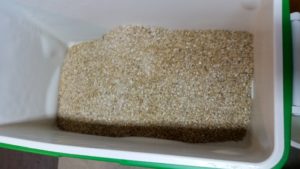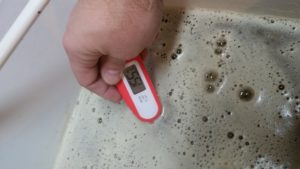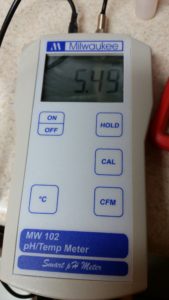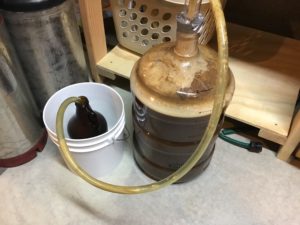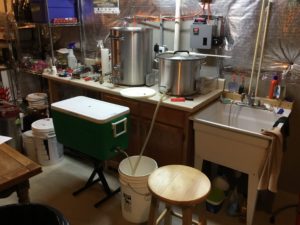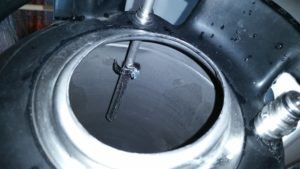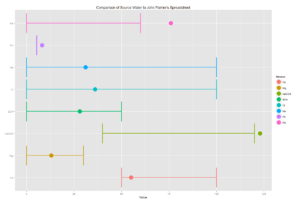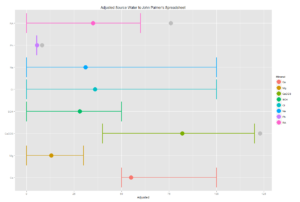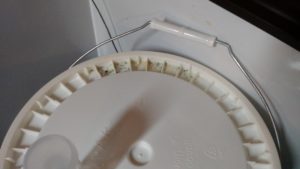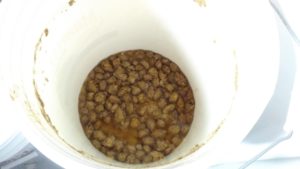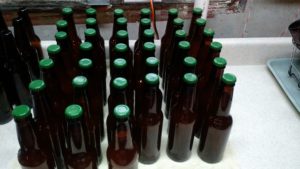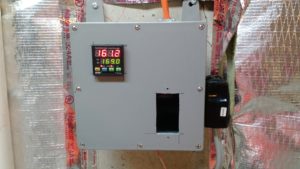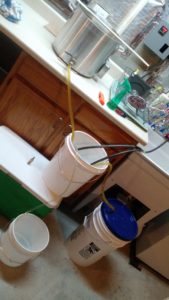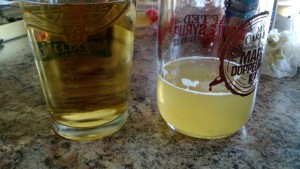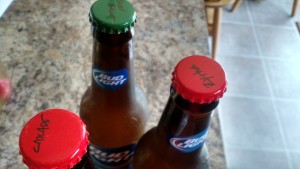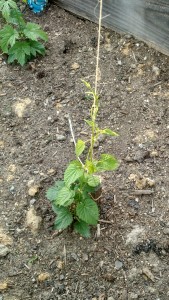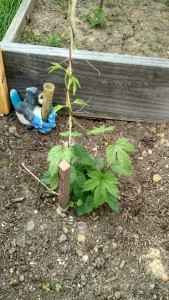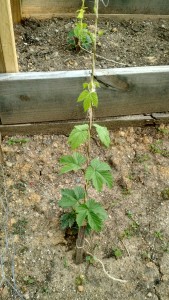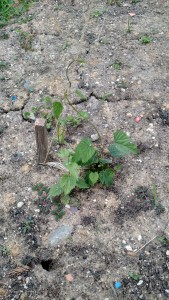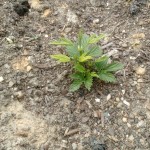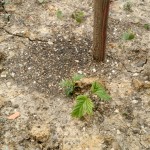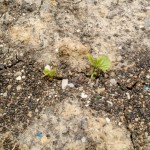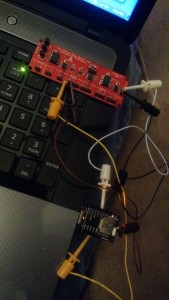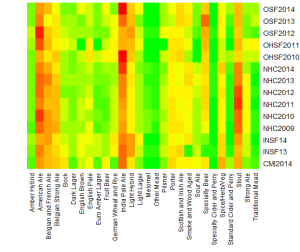Tag Archive: brewing
Dunkelweisen Brew Day
In Garret Oliver’s The Brewmaster’s Table, Oliver raves about pairing hefeweisens with various German foods – pork in particular, but he also notes that weisens pair well with Mexican food, Indian food, Chinese food, breakfast, seafood, and lamb are all noted (pages 85 to 89). I’ve had one true dunkelweisen – at Hofbrauhaus in Newport, KY, many years ago. According to Untappd, I’ve had a few more – like Shiner Holiday Cheer – that doesn’t seem to fully fit the style (although I like the beer for other reasons). So I had been wanting to brew one.
The Recipe
Recipe Details
| Batch Size | Boil Time | IBU | SRM | Est. OG | Est. FG | ABV |
|---|---|---|---|---|---|---|
| 5 gal | 60 min | 23.2 IBUs | 19.2 SRM | 1.058 | 1.013 | 5.8 % |
| Actuals | 1.046 | 1.013 | 4.3 % | |||
Style Details
| Name | Cat. | OG Range | FG Range | IBU | SRM | Carb | ABV |
|---|---|---|---|---|---|---|---|
| Dunkles Weissbier | 10 B | 1.044 - 1.056 | 1.01 - 1.014 | 10 - 18 | 14 - 23 | 2.9 - 4.1 | 4.3 - 5.6 % |
Fermentables
| Name | Amount | % |
|---|---|---|
| Wheat - Red Malt (Briess) | 5 lbs | 44.44 |
| Caramel Malt - 120L (Briess) | 8 oz | 4.44 |
| Munich 10L (Briess) | 1.5 lbs | 13.33 |
| Swaen©Ale | 4 lbs | 35.56 |
| De-Bittered Black Malt (Dingemans) | 4 oz | 2.22 |
Hops
| Name | Amount | Time | Use | Form | Alpha % |
|---|---|---|---|---|---|
| Magnum | 0.25 oz | 60 min | Boil | Pellet | 14 |
| Tettnang, U.S. | 4 oz | 15 min | Boil | Leaf | 2 |
Miscs
| Name | Amount | Time | Use | Type |
|---|---|---|---|---|
| Lactic Acid | 3.50 ml | 60 min | Mash | Water Agent |
Yeast
| Name | Lab | Attenuation | Temperature |
|---|---|---|---|
| Weihenstephan Weizen (3068) | Wyeast Labs | 75% | 64°F - 75°F |
Mash
| Step | Temperature | Time |
|---|---|---|
| Mash In | 152°F | 60 min |
Download
| Download this recipe's BeerXML file |
The Brewday
Fermentation
This fermented in my basement around 64-68F. My initial taste, around a week after fermentation, it had a subtle banana ester and the floral flavor of a Märzen. Not bad!
One thing to consider when using Wyeast 3068 (the Weinenstephan strain) is you MUST use a blowoff! I had a decent amount of headspace and it still required a blowoff tube.
Log
2017-12-17: Brew day. Mash efficiency: 71%, Brewhouse efficiency: 63.2%
2017-12-24: SG at 1.012
2017-12-27: SG at 1.010
IPA Brew Day – Make IPA Great Again!
It was a dark and stormy brew day.
No, actually, it was cold and cloudy. I was inside though. I started the brew day at 7:30 AM by getting both kettles going with water – the BK had the mash tun heat up water and the HLT had my strike water (which I measured the prior night and filled the HLT to let the chlorine dissipate. I put a lid on the BK and then went upstairs to make breakfast for the family.
Backstory
I decided that since I now have two medals in styles that I like (but not love), I am going to try to medal in styles that I love – which basically means IPA. Maybe APA. Probably also British Bitter. Possibly dunkelweisen too (we’ll see). This is the first of that – I want to make an IPA that hits all the marks in the right spot. While I have been really enjoying some NEIPAs (specifically those from Listermann Brewing), this one will be clear, bitter, and aromatic. I want only some malt sweetness, and I definitely want it to take a backseat to the hops.
Brew Day
Upon returning to the basement brewery, I pulled the lid giving myself a nice steam burn on my left arm. I realized the element was at the max despite being set to ‘5’. I think the SSR is melted. I pulled the plug on the BK and drained the water into the mash tun to preheat while I added 5 ml of acid to the HLT for the mash water. Once the mash tun was mostly empty, I dumped the rest and dumped the grain into it. I shut the element off on the HLT and doughed in, hitting a mash temp of 154ºF, which only dropped to 152ºF over the hour rest. Mash pH was good, at about 5.3. After the hour, I recirculated and lautered for more sweet wort than I’ve ever received for first runnings – it was around 3.1 gallons, I was shooting for 3.5 gallons. Looks like the union I installed into the mash tun helped! I began the batch sparge and 10 minute rest and then dumped the first runnings into the BK. After the rest, I recirculated and lautered for just under 3.5 gallons for the second runnings and added the second runnings to the first in the boil kettle. I stirred and pulled a sample and then began boil.
And what a boil it was. Since the SSR was melted, it’s like using a propane burner on max. I started with around 6.5 gallons, and my final volume was around 5 before chilling caused me to lose some more (maybe 0.5 gallons, I ended up with 4.5 in the fermenter). When adding my 15 minute hop addition, I rigged the plate chiller and started recirculating boiling wort through it without running anything in the cold side. 15 minutes later, I shut off the element and turned on the cold water to begin chilling. At some point my pump failed, as it wasn’t pumping anything. My response to this was to use gravity to chill to my bottling bucket, and then drain the bottling bucket through the plate chiller and into the fermenter. This worked (I got down to 72ºF or so), but it was a pain and subjected the wort to some oxygen when it is most vulnerable to oxidization.
I pitched the yeast, I decided to use Denny’s Favorite, which appears to be from North Coast Brewing (the people that make Old Rasputin). The Fermentation temperature reached 75ºF around 24 hours post-pitch, and around 40 hours post-pitch was down to 70-72ºF.
Recipe
.
[beerxml recipe=”http://www.runningonbeer.net/wordpress/wp-content/uploads/2017/11/MakeIpaGreatAgain.xml” metric=false mhop=false misc=true]
Serving
After conversing with some fellow homebrewers on Reddit, I decided to give this a week to 10 days in the fermenter, crash it, rack it to a keg with an added hop sock of the dry hops and slow carbonate it over a week or so.
Notes
2017-11-11: Brewed
2017-11-19: Kegged
https://twitter.com/HamBrew807/status/933109708378034177
Cheers!
My First Sour: a Flanders Red?
I’ve been wanting to do a few sours for a while, and recently purchased two Better Bottles for the purpose of one being a sour-only fermenter. I’m merging two recipes, one is the on the Milk The Funk Wiki, which is the malt bill for The Rare Barrel beers. Since it is only part of a recipe, I took the other part from the Flanders Red Solera recipe from the Bloatarian Brewing League (a Cincinnati homebrew club) – specifically the hopping, mashing schedule, and yeast.
Water
My base water is pretty close for a Flanders Red, just a tad alkaline.
The only adjustments are basically pH, so once I add a milliliter of Lactic Acid, it puts the water right in line with where it needs to be.
Recipe
Recipe Details
| Batch Size | Boil Time | IBU | SRM | Est. OG | Est. FG | ABV |
|---|---|---|---|---|---|---|
| 5.5 gal | 60 min | 17.1 IBUs | 13.4 SRM | 1.053 | 1.012 | 5.4 % |
| Actuals | 1.046 | 1.01 | 4.7 % | |||
Style Details
| Name | Cat. | OG Range | FG Range | IBU | SRM | Carb | ABV |
|---|---|---|---|---|---|---|---|
| Flanders Red Ale | 23 B | 1.048 - 1.057 | 1.002 - 1.012 | 10 - 25 | 10 - 16 | 2 - 2.7 | 4.6 - 6.5 % |
Fermentables
| Name | Amount | % |
|---|---|---|
| Pilsner (2 Row) Bel | 8 lbs | 71.11 |
| Wheat Malt (Barrett Burston) | 1.5 lbs | 13.33 |
| Caramel/Crystal Malt - 60L | 8 oz | 4.44 |
| Oats, Flaked | 8 oz | 4.44 |
| Vienna Malt (Briess) | 8 oz | 4.44 |
| Carafa II | 4 oz | 2.22 |
Hops
| Name | Amount | Time | Use | Form | Alpha % |
|---|---|---|---|---|---|
| Mt. Hood | 1 oz | 45 min | Boil | Pellet | 6 |
Miscs
| Name | Amount | Time | Use | Type |
|---|---|---|---|---|
| Lactic Acid | 1.00 ml | 60 min | Mash | Water Agent |
| Oak Chips | 4.40 oz | 7 days | Secondary | Flavor |
Yeast
| Name | Lab | Attenuation | Temperature |
|---|---|---|---|
| Roselare Belgian Blend (3763) | Wyeast Labs | 80% | 55°F - 80°F |
Mash
| Step | Temperature | Time |
|---|---|---|
| Mash In | 156°F | 90 min |
Download
| Download this recipe's BeerXML file |
This is still in progress, and the oak is questionable at this point.
IPA Bottled… God, I Hate Bottling. And Mold.
I had this IPA sitting in the fermenter a week longer than I anticipated. It had to be bottled this week, though – next week is likely going to be busy (I’m volunteering with the Cincinnati Queen Bee Half Marathon for part of Saturday, and Sunday will likely be busy with family). This is a somewhat fitting end to a great weekend… well, the lovely citrus hop aromas was a fitting end, the rest, not so much.
Friday kicked off with Pint Night courtesy of my wife asking for Woodchuck Harvest Cider. The featured brewery was 5 Rabbit Cerveceria, and in attendance was Randy Mosher (partner and creative director at 5 Rabbit). I got to talk to Randy for a few minutes, which was awesome since I’ve read two of his books. I found out he went to the University of Cincinnati College of Design, Architecture, Art, and Planning (DAAP) “when it was just DAA, before the P”. I told him I went there for urban planning, in DAAP, after they added the P. It was a true beer geek moment, and I was savoring it with their Yodo con Leche, which is among the best beers I’ve tasted!
Saturday, my wife arranged for her parents to babysit the kids and we went to Rivertown Brewery and Barrelhouse. We arrived just behind a bus full of beer geeks. Initially I was concerned that getting a flight and a seat would be an issue, but fortunately neither was an issue, and we ended up having a nice conversation with a couple that were on the bus.
Sunday began with a little bit of NFL from London and me beginning bottling.
Things were a little more difficult this time because of mold. Part of me wants to blame HBF or AHA or something because one of them tweeted out something about it, but it’s really not their fault. And all this was on the outside. To add to the mold problem, I didn’t have enough corn sugar, so I decided to use math and use a partial batch of corn sugar and sucrose.
Once I boiled the sugar solution (upstairs in the kitchen) and moved it downstairs (to the brewery), I decided to wash all the bottles I was going to use. Normally I don’t because I wash all bottles before taking them into the basement, I decided a change was in order because one of my cats has taken up residence in the basement. I really don’t want cathair in my IPA. Then I had to sanitize the bottles. I don’t own a bottle tree, so dealing with bottles is a painful process of draining bottles on a dish drainer and then setting them on a towel.
I believe I was able to open the fermenter without getting any mold into the beer. This was an AWESOME smelling beer! As soon as I opened the fermenter I was greeted with citrus aromas from the citra, galaxy, and cascade hops I used. Bottling was without incident, and I now have 39 bottles of green capped goodness conditioning in my basement.
The stats:
78 IBU, 6.3%ABV, OG 1.056, FG 1.008.
Of course, this was not the end of bottling day. The mold was not only on my fermenter lid, but also in the freezer. I had to spend some time cleaning it out with antibacterial cleaner. I decided to remove the thermocouple and go with another solution. I also decided that making lagers wasn’t as important to me as not bottling anymore, and I decided I’m going to move towards kegging. I spent a large part of the afternoon on Facebook messenger pelleting a friend of mine with questions.
Cheers until next week!
Another IPA Brew Day
So I decided later than usual on a Saturday to brew. This is a brew that I wanted to do the prior weekend, but my home AC was on the fritz and adding a bunch of humidity to it would not have been a very smart move.
This was an interesting brew day for two reasons. A large portion of the brew day was spent thinking that I would be preparing to brew the following day. I built an electric panel to fix the dangerous setup I had previously.
The thing is, I didn’t have the plug on the cord from the boiler ready. Once I did that, I added water and started things up. Then I went to work on preparing the mash tun. In my last post, I had the stuck sparge from Hell. I did NOT want that happening again. I added some plumbing solder in some strategic places and scrubbed down the copper. At that point (and after messing up and fixing solder joints twice, and since leaks don’t really matter here the mess ups were pretty important to fix), I decided to go ‘all in’ and start mashing.
I love problems that fix themselves!
This brew day had one minor mess up – for my IPA, I have hops at first wort (in the kettle), 15, 5, knockout, and dry. I did first wort, 15, 10, and knockout. Oops. It also had one issue that I thought would be a huge problem – my sparge water kept heating even after the PID said things were off. I didn’t notice until the water hit 205º F, and the heat was still on despite the output light on the PID controller not being on. So I unplugged the boiler to keep the water from boiling and let it cool. Later, when it was time to heat the water back up to sparge temperatures, I plugged the boiler back in and let it heat back up. And it worked correctly. And it worked correctly through the entire boil, too. I love problems that fix themselves!
They leak
Chilling had been an issue in the past, and I still reign supreme at having the most fucked up chilling schemes. This one isn’t much different. I bought a plate chiller on Amazon a few weeks ago. The water inlets and outlets were standard hose fittings. My house is six years old, and the cheap washing machine lines were something that was on the list of things to replace. I decided to purchase new stainless steel lines for the washing machine and use the old lines for the plate chiller.
They leak. Somehow in the process of unhooking them from the back of the washing machine and the wall and putting them on the plate chiller, they decided to leak. And these weren’t leaks that could be fixed by torquing down the connectors or using pipe tape (which is unnecessary on these connectors). And I made sure the O-rings were in the hose connectors.
So I did what any sane person would do. Since I didn’t have enough hose to set the plate chiller in the sink (that would have been optimal), I put the chiller in a bucket. Which started to fill. So to avoid flooding part of my basement, I used a small hose to siphon the leaking water out of the main bucket into another so I could dump water without moving the plate chiller around.
So on the shopping list is two new hoses. Because had I had not-leaking hoses, the plate chiller would have worked very well. And even allowing a lot of the trub go through was okay (I use pellet hops). I’m not sure what temperature I got things down to. Put the ale pail into the fermentation chamber and set it to chill at about 6:30. I ended up pitching the yeast at midnight or so.
The Recipe
The recipe has changed a little. I wanted it a little less malty and a little more crisp.
Recipe Details
| Batch Size | Boil Time | IBU | SRM | Est. OG | Est. FG | ABV |
|---|---|---|---|---|---|---|
| 5 gal | 60 min | 71.4 IBUs | 5.4 SRM | 1.070 | 1.013 | 7.6 % |
| Actuals | 1.051 | 1.01 | 5.4 % | |||
Style Details
| Name | Cat. | OG Range | FG Range | IBU | SRM | Carb | ABV |
|---|---|---|---|---|---|---|---|
| American IPA | 14 B | 1.056 - 1.075 | 1.01 - 1.018 | 40 - 70 | 6 - 15 | 2.2 - 2.7 | 5.5 - 7.5 % |
Fermentables
| Name | Amount | % |
|---|---|---|
| Pale Malt (2 Row) US | 7 lbs | 50 |
| Vienna Malt | 6 lbs | 42.86 |
| Cara-Pils/Dextrine | 1 lbs | 7.14 |
Hops
| Name | Amount | Time | Use | Form | Alpha % |
|---|---|---|---|---|---|
| Cascade | 2 oz | 15 min | First Wort | Pellet | 6.6 |
| Cascade | 0.5 oz | 15 min | Boil | Pellet | 6.6 |
| Citra | 0.5 oz | 15 min | Boil | Pellet | 12 |
| Galaxy | 0.5 oz | 15 min | Boil | Pellet | 11 |
| Cascade | 0.5 oz | 5 min | Boil | Pellet | 6.6 |
| Citra | 0.5 oz | 5 min | Boil | Pellet | 12 |
| Galaxy | 0.5 oz | 5 min | Boil | Pellet | 11 |
| Cascade | 1 oz | 15 min | Aroma | Pellet | 6.6 |
| Citra | 1 oz | 15 min | Aroma | Pellet | 12 |
| Galaxy | 1 oz | 15 min | Aroma | Pellet | 11 |
| Cascade | 1 oz | 7 days | Dry Hop | Pellet | 6.6 |
| Citra | 1 oz | 7 days | Dry Hop | Pellet | 11 |
| Galaxy | 1 oz | 7 days | Dry Hop | Pellet | 11 |
Miscs
| Name | Amount | Time | Use | Type |
|---|---|---|---|---|
| Irish Moss | 0.25 tsp | 15 min | Boil | Fining |
Yeast
| Name | Lab | Attenuation | Temperature |
|---|---|---|---|
| American Ale (1056) | Wyeast Labs | 75% | 60°F - 72°F |
Mash
| Step | Temperature | Time |
|---|---|---|
| Mash In | 148°F | 60 min |
Now the wait. One week (as of time of writing) to add dry hops, and one week to absorb. Then bottling and another week to two weeks to wait. I WISH IT WAS DONE ALREADY.
Cheers!
Hops and Fermentation Controllers
I spent most of the week in Atlantic City. The running injury ruined the potential run on the boardwalk (when you’re a runner, you do these things and look forward to them). The beer is nothing particularly special (although I may have under-rated Tun Tavern’s Irish Red), but I paid for very little of what I drank. And the conference I was part of organizing went very well.
Dry Hopped Bud Light Update
I’ve made it through seven of these. Cascade, Zythos, Green Bullet, Amarillo, Columbus, Mosaic, and Galaxy. I’m sticking to 3-4 per day, and I’m using the unhopped Bud Light to reset my palate. I’ve noticed that Amarillo, Columbus, Mosaic, and Galaxy were all much more flavorful. It may be just mis-measurement in hopping, though.
I’ve been thinking of doing something like this for malt. The flavor of hops is pretty important in some styles (like IPAs), but will traditionally take a back seat to malt in other styles (like damn near every other style, to widely varying degrees).
Homegrown Hops Update
I got a text from my wife on the day I was to leave Atlantic City noting that one of our kids noticed that the hops seemed taller. They indeed grew over the week.
Fermentation Controller Update
I worked a lot on the fermentation controller. The Brewery IoT page now shows real temperatures (it’s my basement’s temperature, but it’s real). I’ll post more about this sometime, but the short version is that it is 100% Raspberry Pi based. There are three scripts that run in cron (scheduled tasks in Linux) – a script that sends the data to my offsite webserver (the one that is serving this page), a script that checks the temperature and turns the solid-state relay on and off, and a third ’emergency stop’ script that ensures that the freezer doesn’t fall to 32 or below (which would be disabled if I ever decided to brew an eisbock).
I’m itching to brew another beer. I’m considering another IPA (shocker there!), and then almost immediately brewing a Marzen style to prepare for September. Late in the year, I have been thinking about a maple bock to brew. I still haven’t made any improvements to the setup except some hose clamps.
Cheers!
BBBC Farm Report
The Hops…
- Tettanang Hops
- Columbus Hops
- Centennial Hops
So I figure I’m going to make a lager at the end of summer when those Tettanang hops are ready.
The Brewery
I was reading up in Mastering Homebrew and noticed that the Wortsplosion was probably caused, in part by using vinyl tube instead of silicone tube… I think. I need to check, and probably still need to see about either getting some hose clamps or just replacing the fittings with something more heat resistant.
I’ve been at work on a fermentation chamber controller.
After a little false start with a sensor that absolutely will not work with 3.3v, I found a sensor that does work and I think I have a solution in mind. The RFduino might be a better way than an ESP-8266, but we’ll see. I still have the option to use this sensor and the Raspberry Pi. Also on that thought, I updated the Brewery IoT page. Even more so, the behind-the-scenes stuff works, too – with encryption, even.
Brewing
Tomorrow (by the time this posts) is Brew Day. It’s also the day between the Little King’s Mile and the Flying Pig Half Marathon. I am going to be resting, since I already figure that a lingering injury may make my half a very painful experience and if there’s a snowball’s chance in Hell that I might be miraculously healed I want to be at my best. I might see about brewing the following weekend. I hope everyone taking part in Brew Day has a wonderful time.
In related thoughts, I just (before typing this) drank an amber ale that I think had too much caramel malt in it. I also saw something recently (I don’t recall where) that indicated an over-reliance on caramel malts in general, so I think my next brew – probably another IPA – will have no caramel malt.
Another thing I want to do is to dry hop Bud Light to try some hops by themselves. I know for sure I’d want Amarillo, Chinook, Columbus, Centennial, Cascade, Mosaic, Equinox, Fuggle, Liberty, Northern Brewer, Simcoe, Williamette, and Green Bullet (list subject to change). Bud Light has so little flavor that the hops shine through really well ;-).
Cheers!
The Wortsplosion and Lessons Learned
The title of this, coupled with last week’s post is chilling.
Brew day was not without hitches and major issues. It started with me not hitting my mash temp. The grain was cooler than I thought, so after making adjustments in BeerSmith, I set the temperature controller for the new temperature. I learned something…
Lesson 1: before believing that the temperature is correct, stir the HLT
I added water to bring the temperature up, but probably only partially successfully. My gravity was lower than I wanted by sparge, so I actually re-circulated the wort through the sparge again.
Boil went off mostly without a hitch, but I learned something else…
Lesson 2: it is possible to have too much of a boil
I didn’t get a mess (yet), but the wave caused by the over-active boil was a little scary. I found that 212.6F was a pretty good boil without causing a wave.
Lesson 3: Ventilation is important
The condensation caused minor issues, but allowed to go too long, this could become dangerous (mold?). Better work on a ventilation system. In the meantime, I’m running a dehumidifier.
Lesson 4: Barbed connectors shouldn’t be connected to pumps used for hot wort
Yeah, this is where the wortsplosion happened. I have a barbed connector going from my boil tun to and from the pump, to and from an immersion chiller in a bucket of ice water (I’m using it backwards, the heating element is in the way of using it normally, yes I cleaned it!).
Lesson 5: Wortsplosions are bad, especially where electricity is involved
Wort spraying everywhere means that it got on everything.
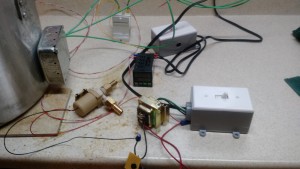
The pic doesn’t do it justice – there was wort on the side of the boil tun, the switches, the transformer, the PID controller, and me.
Somehow I managed to not get electrocuted in all this. The switches are not waterproof, and 24V AC and DC wiring is exposed. Everything had to be disassembled for cleaning.
One thing I did not own is a mop. I had to run out and get one, and I used some extra-strength purple Simple Green cleaner I had in my garage to remove the half-dried wort from the floor.
Total wort loss was about 3 quarts. 1 quart in my jeans, the rest to the floor. Not a total loss.
I did end up hitting about 70% efficiency, which I partly blame on adding the grain to the mash water in the cooler as opposed to the other way around. I also drained and sparged much slower.
Anyway, I’m going to consider buying a plate chiller. And new fittings (fuck the barbed hose fittings). Probably cam fittings.
The Saison that I brewed is fermenting.
Cheers!
Dangerous Electric Boil Kettle DONE!
I had some free time over the weekend and was able to work on the brew kettle. As of Saturday afternoon, I was boiling water and if it wasn’t for having a few things to do I would have probably ran over to my LHBS and got a few pounds of malt and hops.
The things I did dangerously was that I used all green wire (the standard AC convention is red or black for hot, white for neutral, and green for ground). Also, I have no enclosure around all that power. I also do not have a way to disconnect this from power (other than a breaker, which is currently switched off since I’m not brewing anything).
While I was at it, I replaced my valve with a non-leaking valve (my previous valve was actually for a compression fitting, so it leaked). There is a remaining issue – I have to replace the fitting on the thermocouple because right now I have a compression nut (which leaves a place for bacteria to sit and harvest).
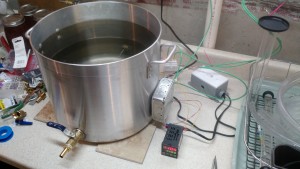
This is the setup. Not perfect, but it works. The switch is for the PID controller (the black box). The SSR is hiding behind the boiler.
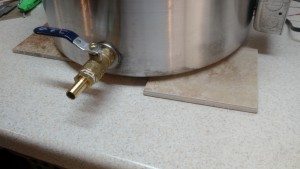
This is my counter protection – 3 6″x6″ ceramic tiles. I don’t think the kettle would damage my Formica countertop, but I don’t want to find out if I’m wrong.
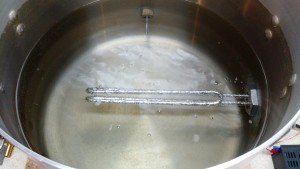
This is the element running and boiling water.
Other Happenings
My cousin was selling a small freezer that would be perfect for us and would replace my current chest freezer with a small upright (and replace a non-energy-star freezer with one that is). Initially I was thinking KEGERATOR!, but after a night’s sleep I thought it might be better to do some fermentation temperature control. That means eventually I will make a schwarzbier, possibly a kolsch, and probably a bock beer early next year.
Cheers!
More Looking at Beer Competitions
In the last few weeks since I first did some data-crunching on a few competitions (the Ohio State Fair, the AHA National Homebrewers Competition, and the Indiana State Fair), two things have happened – the results for the Cincinnati Malt Infusers 2015 All-American Home Brew Competition were released and I read an article about making heat maps, which is a better way to look at this.
Note: green means few, red means many. Colors are proportion of the entries for that competition.
This really just shows the same conclusions I already came to previously:
- American Ale, IPA, and Stout are the most popular categories
- Light Hybrid is a little more popular at the state fairs than the NHC (which can probably be deemed to be somewhat of an average)
One thing the heat map shows is how some styles ebb and flow through time and location. Smoke, sour, and Belgian strong categories really show that.
The other conclusion I came to in the last writing on this subject still applies, too. This doesn’t matter if YOU like the beer you brew.
Cheers!
